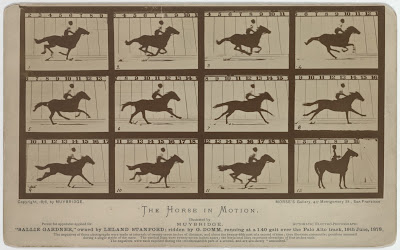Romantic Era: Photography and Sculpture
Photography and Sculpture in the Romantic Era
Introduction
The Romantic Era came after the Enlightenment and was an influential movement that integrated emotion and feeling into the adopted lifestyle of purely logical thinking. Artists began using their work to teach important topics such as injustice or emotional thinking. In doing this, freedom and equality became well-known to all. Landscapes, tragedies, and harmony between humans and nature were some of this time's most commonly seen works. This blog evaluates photography and sculpture in the Romantic Era.
Photography
In the 1800s, photography was a huge step in the learning curve of many different things. The first photograph was taken in 1821, and many more came quickly after that. This incredible art allowed people to capture and share moments that paintings or drawings couldn't.
Another example of photography's great influence during the 19th century was how simplistic pictures could evoke such emotion. Photography was not always embraced as an art form but paved the way to show that beauty doesn't only come from clear, colorful images.
Landscape With Clouds by Roger Fenton is a prime example of the difference between beauty in paintings and photographs. Although the picture is colorless, blurry, and dark, it still elicits emotion from looking at it. I love photography because you can't make up what you see in a raw picture. This photo is very plain but has interesting elements. The lines create a perimeter around the trees and shape the clouds beautifully. The value shows great contrast between the sky and land, which draws attention to the trees and clouds. The texture implied in the photo is grainy. This gives the photograph a raw and realistic feel when looking at it. Beauty can be found in many places, whether the photograph is of people or landscapes, and it is all real. Although I love paintings, drawings, and other art forms, I think photography is one of the purest ways to show beauty and reality. I also believe the photographers in the 19th century used this art form to share raw beauty and knowledge.
Sculpture
As emotional thinking of the Romantic Era spread, artists were searching for more ways to express emotion and feeling. Sculpture became a way to represent life-like art that could be molded in ways to express said emotion. Personally, I have never been a fan of sculpture, which is why I chose to compare it with photography.
The Burghers of Calais by Auguste Rodin was a sculpture made for the purpose of showing how people can be surrounded by others but still feel completely alone. Rodin was actually tasked with creating a statue to commemorate the heroism of the Calais citizen, Eustache de Saint-Perre, in the Hundred Years' War. Rodin decided to show six men bonded by their fear of death and feeling of hopelessness, instead of the happiness of winning the war. The texture of the sculpture shows the men's baggy clothing that hangs off of them and captures the light on the seams of the clothing. The 3-dimensional form also is a unique part of sculptures because it brings them to life in a way that paintings and photographs can't do. Rodin also uses very intentional spacing between the men. He puts them close to each other but purposefully makes each man avoid eye contact or physical contact. Although I am not the biggest fan of sculptures, this one is very beautiful and there is a clear story behind it. Rodin was able to use his art to express a very dreadful time for many, many people.
Camille Claudel's sculpture The Age of Maturity is one that depicts the story of moving from youth to old age. Another interpretation of this sculpture says that Claudel herself is trying to hold on to Rodin, who is being taken away by his long-term partner. Claudel was a lover of August Rodin but made her name independently in the art world during the 19th century. This is one of her more famous works, and although I don't personally enjoy the artwork, Claudel does a wonderful job of storytelling. The two standing figures are very textured, which shows that the figure kneeling is much younger than them. The spacing of the figures also adds to the story, as the people standing are much closer together and only physically connected to the kneeling figure by a fingertip. The 3-D form once again creates a realistic image that really builds a story that is unique to the art form of sculpture.
Sources
Ben Pollitt, "Camille Claudel, The Age of Maturity," in Smarthistory, August 9, 2015, accessed July 11, 2023, https://smarthistory.org/claudel-the-age-of-maturity/.
Dr. Kris Belden-Adams, "Eadweard Muybridge, The Horse in Motion," in Smarthistory, June 6, 2021, accessed July 10, 2023, https://smarthistory.org/eadweard-muybridge-the-horse-in-motion/.
Elisabeth Rowney, "Auguste Rodin, The Burghers of Calais," in Smarthistory, August 9, 2015, accessed July 11, 2023, https://smarthistory.org/rodin-the-burghers-of-calais/.
“Romanticism Movement Overview.” The Art Story, www.theartstory.org/movement/romanticism/. Accessed 10 July 2023.
The Metropolitan Museum of Art, "Roger Fenton, Landscape with clouds," in Smarthistory, March 8, 2021, accessed July 10, 2023, https://smarthistory.org/fenton-landscape-with-clouds/.




ReplyDeleteThank you for sharing those two styles. You took an original approach and it was very interesting to read. I like the photography part of your project because I think it is a big precursor for the type of art we see nowadays. Photography is very prevalent in today’s society and there has been tremendous growth since the first pictures were taken in the 1800s. The first pictures taken set a standard for the quality of photography we saw develop over the years, motion pictures eventually leading to videos and films.
I really enjoyed your insights into both styles. My favorite piece you covered was Landscape With Clouds by Roger Fenton. Fenton uses the sun behind the clouds to show the depth and size of the clouds. It almost seems like a sunset captured, where only the outlines of the landscape is visible. The rawness of the moment reminds me of living in Oklahoma.
ReplyDelete